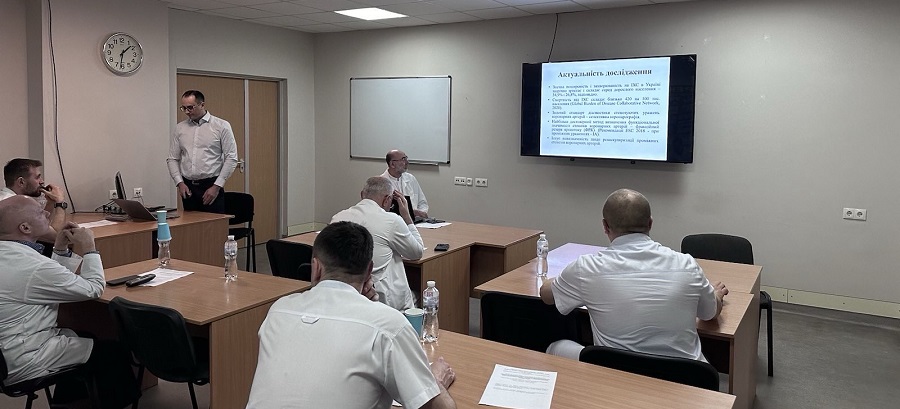On February 21, 2024, at the department of cardiac surgery, endovascular and extracorporeal technologies of Shupyk National Healthcare University of Ukraine, a professional seminar was held on the review of the results of the dissertation work of Stan Mykola Vasyliovych, a graduate student of the department « Evaluation of the fractional reserve of blood flow to determine the tactics of revascularization interventions in patients with stable coronary heart disease »; (supervisor - Professor Borys Todurov).

The meeting was chaired by the head of the department of anesthesiology and intensive care, Professor Oleg Loskutov, with the involvement of scientific and pedagogical workers and postgraduate students of the department of cardiac surgery, endovascular and extracorporeal technologies; functional diagnostics; anesthesiology and intensive care, employees of the clinical base of the department - State University "Heart Institute of the Ministry of Health of Ukraine". The head of the Department of Cardiology Professor Maryna Dolzhenko and the head of the Department of Surgery and Vascular Surgery Professor Serhii Savoliuk acted as reviewers.

The work carried out made it possible to establish clinical criteria in which the study of FFR is the most useful for determining the indications for revascularization interventions in patients with stable coronary artery disease. In patients with one- and two-vessel intermediate lesions of the coronary arteries, a FFR index of less than 0.8 indicates the benefit of revascularization intervention. In patients with multivessel lesions of the coronary arteries, the study of FFR can affect the amount of revascularization intervention.

However, when a multivessel lesion is combined with angina and/or left ventricular dysfunction, in which there are no contraindications, surgical revascularization is the method of choice. When determining the feasibility of percutaneous coronary intervention for stable coronary artery disease and intermediate lesions of the coronary arteries, it is important to predict the possibility of the most favorable post-procedural dynamics of health-related quality of life in older patients, with worse initial indicators of quality of life according to the SF-36 and SAQ questionnaires, a higher initial level total blood serum cholesterol, as well as in the absence of certain clinical and angiographic factors (diabetes, suffered in the past acute violation of cerebral blood circulation, data on multivessel lesions coronary artery and restenosis in the area of previously implanted stents).
On the basis of the positive reviews of the reviewers and taking into account the results of the scientific discussion, the work was recommended for official defense in a one-time specialized scientific council.



